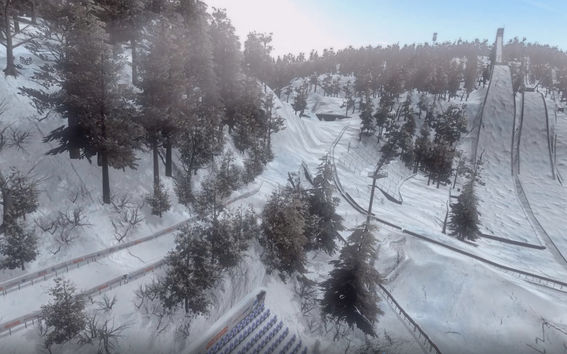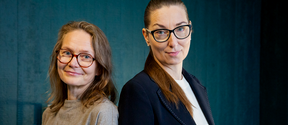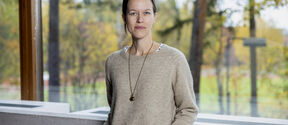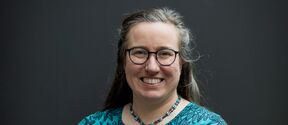Pioneers in 3D virtualisation receive the first National Open Science Award

Ten years ago, Professor Hannu Hyyppä and Science Producer Marika Ahlavuo from Aalto University began to consider how the results of the hard work performed by researchers could be presented otherwise and more visually than usual scientific publications.
Today, these efforts were rewarded as MeMo received the National Open Science Award, now given out for the first time. The justifications for the award included the promotion of interaction between research and society, the openness of research results and the packaging of science into a form that serves society's needs. The research team was also praised for reaching the general public through various exhibitions and events.
‘We are involved in the openness of science, research and teaching in a great many ways’, Hyyppä says.
Openness has been promoted through the science production concept developed at MeMo. The concept is based on a simple idea: as plays, films and performances are produced on various subjects, why couldn’t they be used to present science and its achievements to different target audiences?
Over the past ten years, MeMo has created 3D models of the iconic Lahti ski tracks for Yle Sports, collaborated with Svenska Yle to make the first virtual sound installation in the world for Helsinki Festival, enriched art exhibitions and theatre with augmented reality, and been closely involved in children's art festival Kutitus.
MeMo is jointly run by Aalto University and the Finnish Geospatial Research Institute FGI (belonging to the National Land Survey of Finland). It is also part of the Centre of Excellence in Laser Scanning Research funded by the Academy of Finland. Its skilful 3D virtualisations are created using a combination of laser scanning and photogrammetric photography. In laser scanning, measurement observations form a point cloud of an object's geometry, and this point cloud can be combined with colour values taken from photographs.
‘This gives us a precise model that our 3D artists then complete’, explains Hannu Hyyppä.
‘The process is actually quite simple for us — but then again we have been refining the necessary techniques and algorithms for 15 years.’
Pirunpesä (‘the Devil’s Nest’) is an eroded cavity located in Jalasjärvi, South Ostrobothnia. The cavity is 23 metres deep and 14 metres wide. © Aalto University and Finnish Geospatial Research Institute FGI
Learning and participation
In total, there are 25 MeMo researchers at Aalto University. The Institute with FGI is the global leader in mobile laser scanning and its 3D studio is among the top studios in the world both in terms of technology and competence.
‘We have brought together experts from different fields. MeMo’s success is based on its people. For us, the 3D studio is a place for sharing information and ideas’, says Marika Ahlavuo.
Competence development is also taken seriously. Everyone working at MeMo is committed to constant studying and participates in writing scientific publications, teaching and developing the 3D studio. Influencing society is also a matter for everyone.
‘Our researchers take turns representing us at events and on visits’, says Hannu Hyyppä.
‘Interaction between researchers from different universities should be increased. Otherwise there is a great risk that the same topic will needlessly be studied at several locations, which will slow down progress and waste resources.’
MeMo has made 3D virtualisations of many of the treasures stored at the National Museum of Finland. Even extremely sensitive, valuable or worn objects can be presented to the audience in virtual form. This clarinet is part of the ethnological collections of the National Museum of Finland. According to oral tradition, it was made by Herman Saxberg (1830–1909), a folk musician from Keuruu. Accurate 3D models are also important when old buildings are renovated or rebuilt. © Aalto University and National Museum of Finland
MeMo has a lot to offer to three of today's megatrends: digitalisation, urbanisation and continuous learning. A self-driving car, for instance, needs a model of the environment that it continuously supplements with laser scanning. Virtual reality and augmented reality will be very useful in future learning applications.
‘How people can be helped to learn throughout their lifetime, at least for 50 years, is a really big question’, says Hannu Hyyppä.
MeMo is also currently involved in a new project being carried out in collaboration with the City of Helsinki. The aim is to further develop an existing 3D model of the city so that it can be used as diversely as possible to develop areas such as learning, urban planning, energy solutions and business life.
‘We have also used a drone to test a 8K camera similar to the ones used in Hollywood. The camera can be used to create extremely detailed 3D city models’, Hyyppä reveals.
The National Open Science Award was given out by Open Science National Coordination on 25 November. Learn more about open science and the award here (in Finnish).
More information:
Professor Hannu Hyyppä
The Research Institute of Measuring and Modeling for the Built Environment (MeMo),
Aalto University School of Engineering, Department of Built Environment
hannu.hyyppa@aalto.fi
Science Producer Marika Ahlavuo
The Research Institute of Measuring and Modeling for the Built Environment (MeMo),
Aalto University School of Engineering, Department of Built Environment
Tel. +358 50 512 2509
marika.ahlavuo@aalto.fi
See also:
What if you could experience a rock concert while ‘driving’ a car?
Laser scanning the 3D world
Read more news

Sara Hulkkonen and Johanna Wartio start as Data Agents at the School of ARTS
Aalto Open Research Network has new members, Sara Hulkkonen and Johanna Wartio. Their aim is to support data management practices at the School of ARTS.
Research into physics of microscopically tiny organisms lands prestigious prize
Physics Professor Matilda Backholm received this year’s Väisälä award, handed out by the Finnish Academy of Sciences and Letters.
Sanna Suoranta elected Computer Science teacher of the year 2025
The teacher of the year was announced at CS Staff meeting on Tuesday 9 December 2025.






